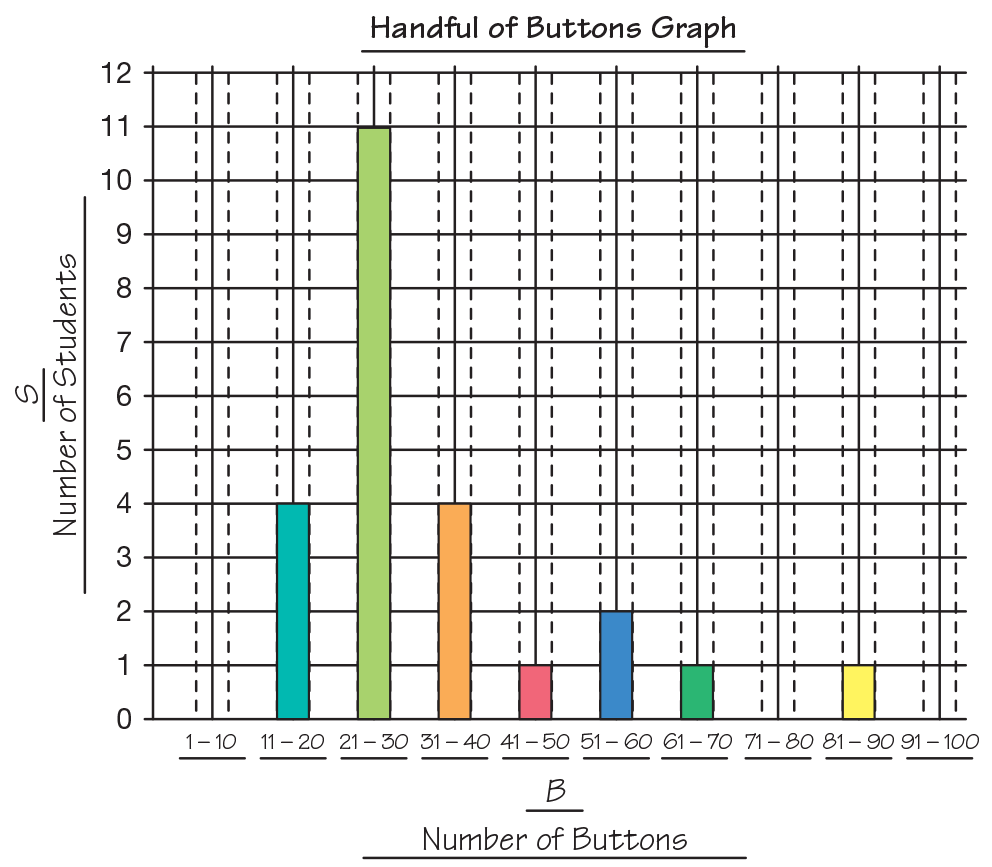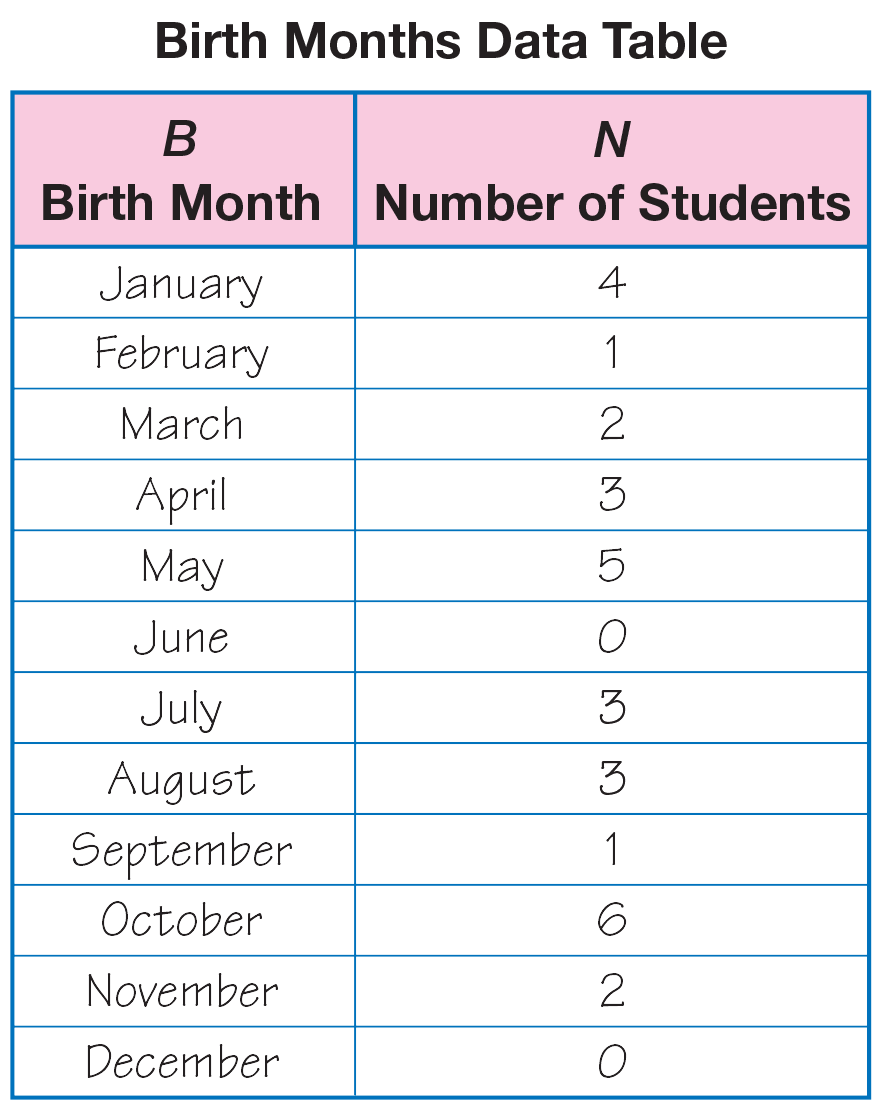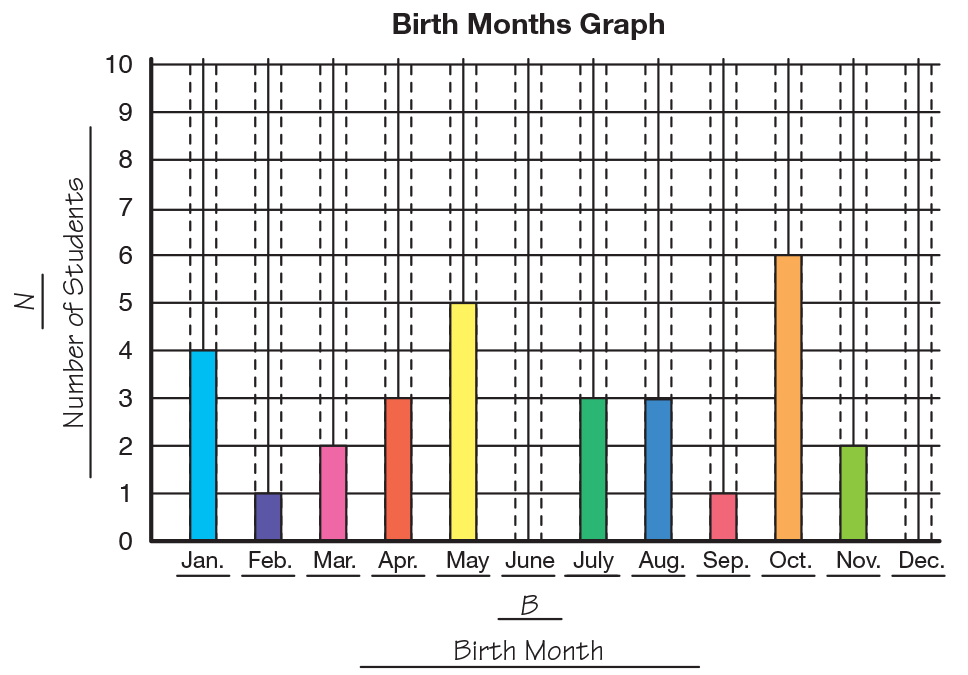Students review the TIMS Laboratory Method (a four-step adaptation of the scientific method) in a teacher-guided investigation of students' birth months. Students collect and represent this information to solve problems.
Content in this Lesson
- Representing addition and subtraction situations using number sentences [E1].
- Using addition and subtraction to solve one- and two-step word problems involving situations of join, separate/take away, part-whole, and compare [E3].
- Collecting and organizing data in a table.
- Making a bar graph and picture graph to find information about a data set.
- Reading a table, bar graph, or picture graph to solve problems about a data set [E6].
- Solving problems using data from a table and graph.
- Showing a strategy [MPE5].
Daily Practice and Problems C–F
Assessment in this Lesson
| Assessment | Expectation Assessed | Math Practices Expectation Assessed |
|---|---|---|
|
Ms. Carter's Class Check-In: Questions 8–12 with Feedback Box Student Activity Book Pages 7–8 |
|
|




















